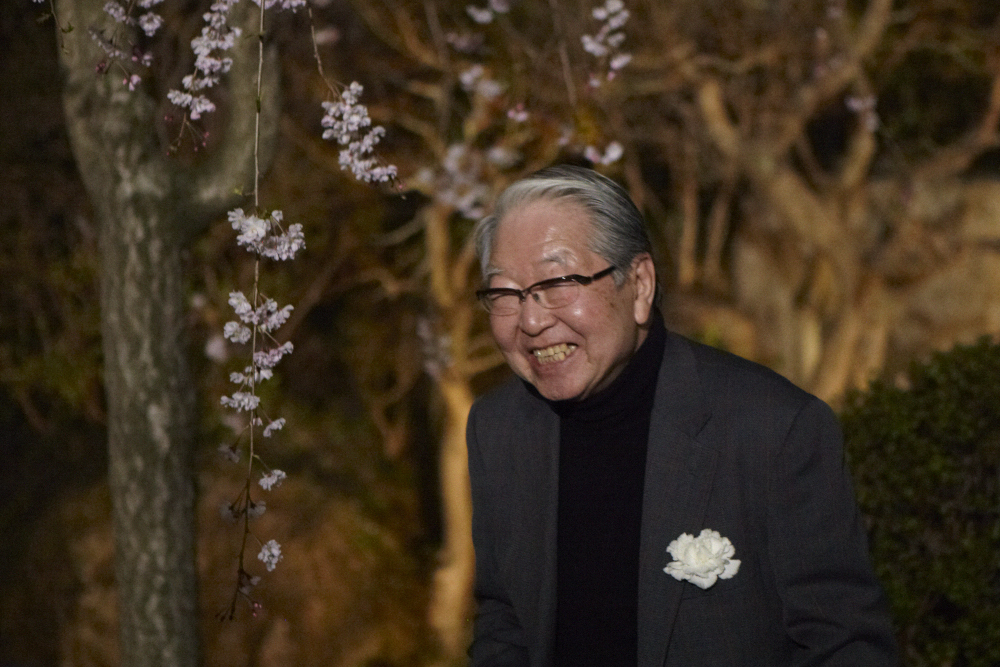Eikoh Hosoe, 1933–2024
By Annette Meier

Portrait of EIKOH HOSOE. Photo by Kenji Takahashi. Courtesy Taka Ishii Gallery, Tokyo.
Eikoh Hosoe, an influential Japanese postwar photographer and filmmaker known for his transgressive visual style, died in Tokyo on September 16 aged 91. His family announced his passing last Wednesday.
Born Toshihiro Hosoe in 1933 in Yonezawa, Yamagata Prefecture, he was raised in Tokyo. Hosoe’s childhood was disrupted by the outbreak of World War II. When he was 11 years old he witnessed the US firebombing of the Japanese capital, and his family fled to Tohoku, a rural northeastern village that his mother had grown up in. Despite, or perhaps because of, the horrors of the war, Hosoe was imbued with a spiritual worldview that would later influence his photographic approach.
Hosoe showed interest in photography from a young age, borrowing his father’s camera to take pictures and joining his high school’s photography club. In 1951, a teenage Hosoe won the inaugural Fuji Photo Contest for his work Poddie Jawoski (1950), a portrait of a young girl living on a US military base in Tokyo. It was around this time that he decided to become a professional photographer, adopting the pseudonym Eikoh.
While studying at the Tokyo Polytechnic University (formerly, the Tokyo College of Photography), Hosoe made a name for himself by joining the Demokrato Artist’s Association, a Japanese avant-garde art group. He became acquainted with other experimental artists and writers, including photographer and engraver Ei-Q, who significantly influenced his work. Two years after graduating, in 1956, Hosoe held his first solo exhibition, titled “An American Girl in Tokyo,” at the Konishiroku Photo Gallery in Tokyo. Later, he co-founded the short-lived photographic cooperative VIVO (1959–61) alongside fellow photographers Shomei Tomatsu, Kikuji Kawada, Akira Sato, and Ikko Narahara, exploring photography as an art form rather than a purely journalistic medium.
Hosoe first garnered critical attention through his Man and Woman series (1960), which featured stylized, black-and-white compositions of nude bodies. He was fascinated by the human physique, presenting them in dramatic ways that defied the photographic conventions of social realism. His interest in bodily forms, movements, and sensuality persists in his best-known work Ordeal by Roses (1961), a darkly erotic photographic series of the infamous novelist Yukio Mishima, for which he was given the 1963 Lifetime Achievement Award by the Photographic Society of Japan.
Around the same time Hosoe co-founded the Jazz Film Laboratory, a multidisciplinary art project through which he produced his black-and-white short film Navel and A-Bomb (1960). In the following decades he continued to collaborate with creatives on projects such as Kamaitachi (1969), a series featuring the famed ankoku butoh dancer Hijikata Tatsumi. Drawing on Hosoe’s childhood memories of war, the photographs depict Hijikata as the mischievous kamaitachi spirit who, according to regional folklore, haunts rice fields.
Throughout his prolific career Hosoe received various accolades from the Japanese government and imperial family, including the Medal with Purple Ribbon (1998); the Order of the Rising Sun (2007); the Mainichi Art Award (2008); and the Ministry of Education’s Person of Cultural Merit award (2010). In 2003, he was honored with the British Royal Photographic Society’s 150th-anniversary special medal. Hosoe was also named the director of the Kiyosato Museum of Photographic Arts in 1995 and was the vice president of the Japanese Photographers Association for over four decades.
Hosoe’s photographic work has been exhibited in numerous solo and group exhibitions in Japan and abroad, and is held in the permanent collections of prominent institutions, including New York’s Metropolitan Museum of Modern Art, the British Museum in London, the J. Paul Getty Museum in Los Angeles, and San Francisco’s Museum of Modern Art.
Annette Meier is an editorial intern at ArtAsiaPacific.







